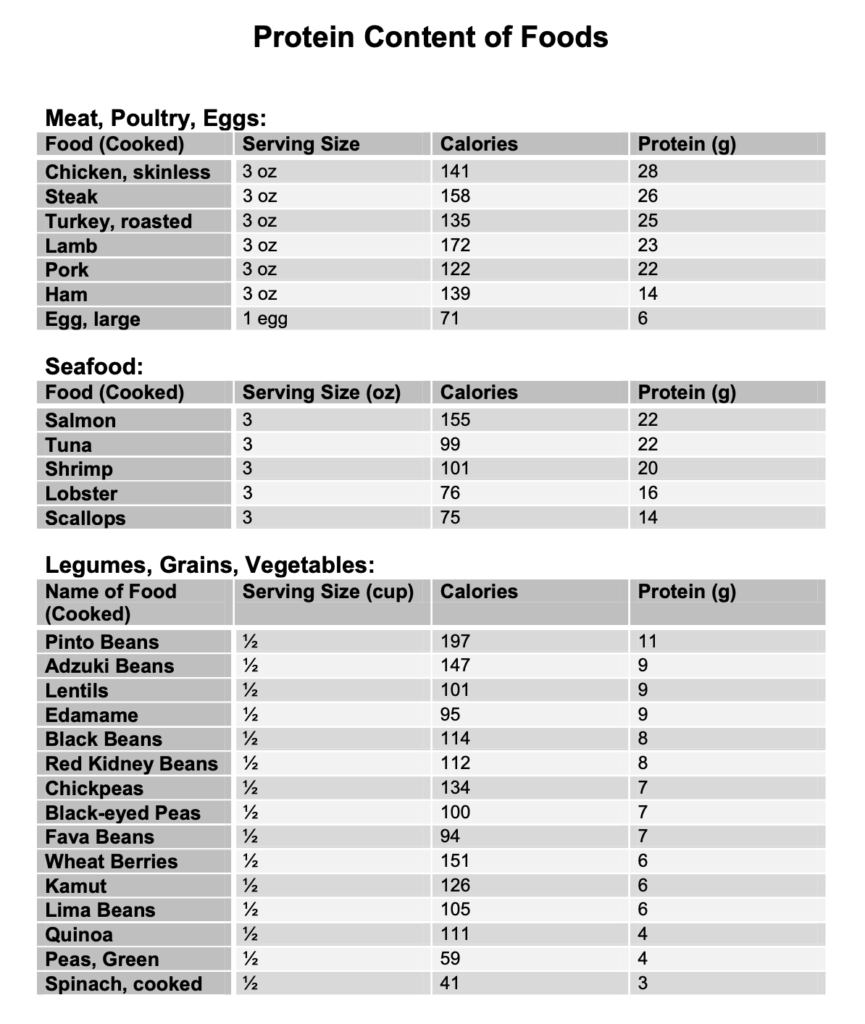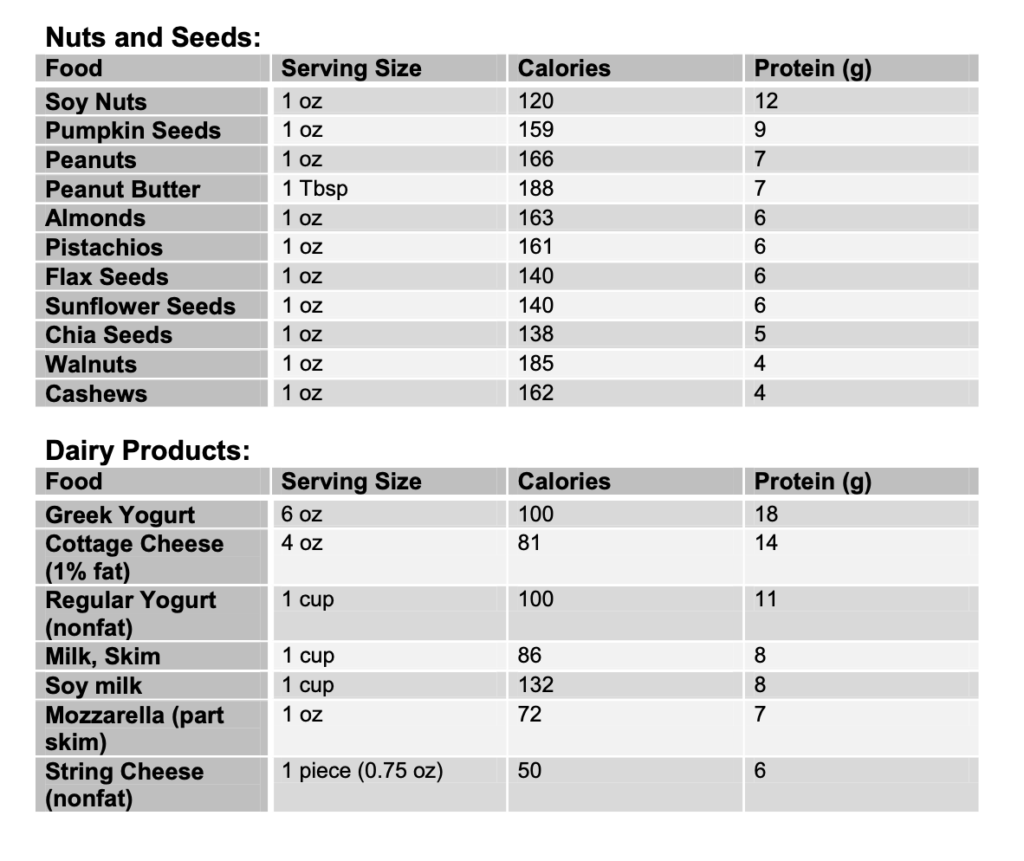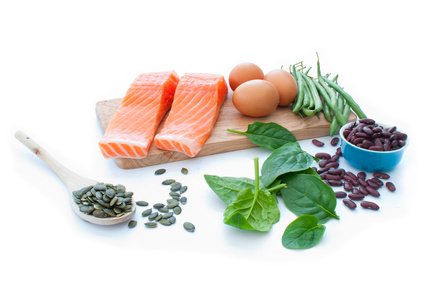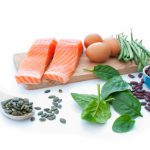 Protein. It is in the meat on your plate, the bacon in your sandwich and the eggs on your toast. You find it in nuts, seeds, dairy, legumes, grains and other plant-based foods.
Protein. It is in the meat on your plate, the bacon in your sandwich and the eggs on your toast. You find it in nuts, seeds, dairy, legumes, grains and other plant-based foods.
The reason I chose to write about protein is that there are a wide range of different diet approaches that each claim to have nailed it: from low protein diets to high protein, low carb diets. Who is right, what does it really mean and how do you know what works for you?
Another reason to examine protein in more detail is because it is an extremely important part of our diet. It provides our body with the building blocks of nearly everything: bones, muscle, cartilage, tissue, nails, skin and even blood. Protein makes enzymes, hormones, neurotransmitters and other body chemicals and the body’s immune system depends on protein to make antibodies.
We get protein through a lot of different dietary sources but first lets understand what differentiates these sources:
Protein molecules consist of smaller molecules called amino acids. There are 20 naturally occurring amino acids. When the body digests dietary protein, it breaks it down into these smaller amino acids, which are then reassembled to form the different types of “building blocks” that our body needs.
We are capable of synthesizing 11 amino acids and the remaining 9 must be obtained through food. When a particular food contains all these essential 9 amino acids, it is called a complete protein.
The difference between protein sources is therefore related to the amino acids it contains (is it a complete protein or incomplete?) and secondly how much protein a particular food has.
Why is this important?
Complete protein sources are almost always animal protein (with the exception of a few). Plant based protein sources are often incomplete and a variety of different plant foods need to be eaten in the course of a day to get all the required amino acids. Rice and beans together, for example, make a complete protein. For vegetarians and more importantly vegans it is important to understand how to eat in order to get the full range of amino acids on a daily basis.
It is also helpful to roughly know the amount of protein different foods contain in order to make sure we get enough in our daily diets. Below you will find a table with this information. *
In this article I will share some more information on individual protein requirements and you will see how there is some controversy on that topic. I will discuss how to choose the best, high quality animal protein and also what are the best plant-based sources for vegetarians or vegans.
Protein Requirements – How much is enough?
 If you are a regular follower of my blog, you will know that I don’t believe in numbers (such as calorie counting) but rather in knowing the basic fundamentals of a healthy diet and building a strong awareness of your body’s dietary needs and requirements by learning to tune in and understanding yourself better and testing where required to further understand your body’s unique needs.
If you are a regular follower of my blog, you will know that I don’t believe in numbers (such as calorie counting) but rather in knowing the basic fundamentals of a healthy diet and building a strong awareness of your body’s dietary needs and requirements by learning to tune in and understanding yourself better and testing where required to further understand your body’s unique needs.
Also, when you delve into the world of diet and nutrition you will see that most of the time there is no real consensus on what is right and wrong in terms of numbers. I believe we are better off considering our own unique health history (with or without the help of a functional health and nutrition practitioner), staying abreast of the latest research, listening to our bodies and tapping into our inner wisdom rather than blindly following general recommendations.
With regards to protein requirements, your ideal protein intake depends on different factors such as your size, age, your stress levels, state of health and your level of activity. Athletes have a higher requirement as compared to a sedentary individual. If you are recovering or healing from an injury, dealing with high stress levels, your requirement will be higher as well.
There are however certain guidelines that you can follow. The USDA RDA (Recommended Daily Allowance) for protein is 0.80 g/kg/day (based on ideal body weight) for a moderately active person. Based on research, this is more like a bare minimum requirement rather than an optimal level, which is twice to three times that much: between 1.6 and 2.2 g/kg of bodyweight per day. For a 70 kg adult with healthy kidney function, this translates into a daily protein requirement of around 120 grams. As the body has a limit in terms of absorbing protein in one sitting, the total intake should be spread out over different meals *.
Note: It is important to remember here that no food is pure protein: an 85 gram (3 ounce) serving of chicken breast contains 25 grams of protein for example.
Choosing Your Protein Sources
1. Animal Protein
 When buying animal protein it is important to know where it came from: if the animal has been raised under humane and natural conditions and if it was fed a diet that it is genetically meant to be eating. A cow is genetically built to roam around in the fields and graze on grass. A chicken needs to have outdoor access to run around and eat a natural diet of worms, insects and lay its eggs freely. The same principles apply to other animals.
When buying animal protein it is important to know where it came from: if the animal has been raised under humane and natural conditions and if it was fed a diet that it is genetically meant to be eating. A cow is genetically built to roam around in the fields and graze on grass. A chicken needs to have outdoor access to run around and eat a natural diet of worms, insects and lay its eggs freely. The same principles apply to other animals.
If an animal has been raised under natural conditions, looked after well and fed its genetically appropriate diet it will automatically be healthier and produce a better quality of meat (or eggs) with higher levels of nutrition. Finding this type of animal protein is not always easy and it will be more expensive. It is absolutely worth your while to make an effort to do so. For the sake of animal welfare as well as your own health.
There are many, often small family-run farms that have re-implemented these more traditional farming methods thereby supplying a better quality of meat (or eggs). I recommend you look in the area that you live for: organic, pastured eggs, whole (if possible raw, fresh) milk, grass-fed meat, free-range organic chicken, etc.
2. Fish & Seafood
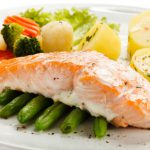 Fish and seafood are excellent sources of protein that also contain healthy fats and other important nutrients. When choosing your fish you need to be aware of a few things: mercury levels, over-fishing, genetic engineering and the addition of chemicals to farmed fish. In general, in order to avoid exposure to high levels of mercury it is advisable to limit your fish intake, especially to the types of fish that are know to contain high levels of mercury. You can find a guide to mercury levels here. In general, the smaller the fish, the less mercury. Choose fish that has been sustainably farmed or better even, wild-caught without the use of common, questionable industry practices. Again, not an easy thing to do, depending on where you live and if you have little way of knowing the source of the fish you are buying, I recommend balancing it out by rotating your protein.
Fish and seafood are excellent sources of protein that also contain healthy fats and other important nutrients. When choosing your fish you need to be aware of a few things: mercury levels, over-fishing, genetic engineering and the addition of chemicals to farmed fish. In general, in order to avoid exposure to high levels of mercury it is advisable to limit your fish intake, especially to the types of fish that are know to contain high levels of mercury. You can find a guide to mercury levels here. In general, the smaller the fish, the less mercury. Choose fish that has been sustainably farmed or better even, wild-caught without the use of common, questionable industry practices. Again, not an easy thing to do, depending on where you live and if you have little way of knowing the source of the fish you are buying, I recommend balancing it out by rotating your protein.
3. Plant-Based Protein
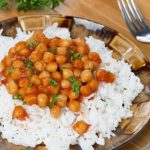 Grains, legumes, nuts and seeds, dairy products, leafy greens and certain fruits and vegetables, are all good sources of plant-based protein, albeit with lesser amounts per serving than animal protein. A downside of depending on plant-based protein is that the protein is less bio-available for absorption and it has a different distribution of amino acids. If you are vegetarian or vegan, it is important to eat a variety of different foods in the course of the day in order to obtain all the essential amino acids and consider supplementing with a high quality protein supplement like whey protein or other plant-based protein powders to ensure you are meeting your requirement.
Grains, legumes, nuts and seeds, dairy products, leafy greens and certain fruits and vegetables, are all good sources of plant-based protein, albeit with lesser amounts per serving than animal protein. A downside of depending on plant-based protein is that the protein is less bio-available for absorption and it has a different distribution of amino acids. If you are vegetarian or vegan, it is important to eat a variety of different foods in the course of the day in order to obtain all the essential amino acids and consider supplementing with a high quality protein supplement like whey protein or other plant-based protein powders to ensure you are meeting your requirement.
Some complete plant-based proteins (that have all 9 essential amino acids) are soy, quinoa, hemp seeds and buckwheat. I advise caution with regards to soy, especially processed soy (soy milk, tofu etc.) as these products are often heavily processed and made with genetically modified (GMO) soybeans. Opt for soy that is certified organic and non–GMO and better even: choose fermented soy products (such as tempeh, miso etc.) Since soy contains phyto-estrogens, regular consumption can influence your hormonal balance.
Rotating your plant based protein sources is always a good idea. As with animal protein, it is important to choose high quality ingredients, ideally organic, non Genetically Modified, local and seasonal.
4. Other protein sources
I advocate a “whole foods” way of eating. Which means a diet, which consists of real, fresh, whole ingredients. You will find many processed foods that are sold to replace or supplement a person’s natural protein intake. Some examples are protein powders, protein bars etc. These are not whole foods and in my opinion not an optimal choice from a nutrition point of view.
However, if you are in a situation of protein deficiency, eating a vegetarian diet or are physically very active you might benefit from using high quality protein powder as a supplement, not a replacement (!), to a whole foods based diet. For example: 100% whey powder from grass fed cows, hydrolysed collagen powder or pure pea protein isolate.
To summarize, here is what you can do to ensure you are getting all the building blocks your body needs:
- Include protein in every meal
- Vary your protein sources
- Choose high quality ingredients
- Use a high quality protein supplement to meet your requirements
If you follow these basic guidelines you will be well on your way to great health and wellness!
Be Well.
Monique
*
